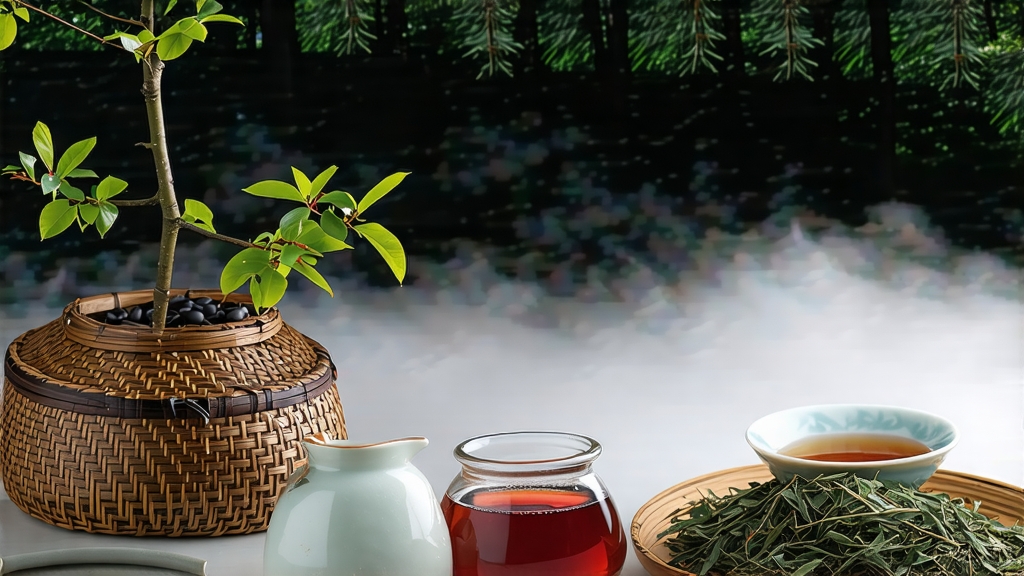
Long before English tea clippers raced across the oceans and Victorian drawing rooms echoed with the clink of bone china, a small village in the Wuyi Mountains of northern Fujian was already perfuming its tea with pine smoke. That village—Tongmu—gave the world Lapsang Souchong, the earliest black tea ever created and the prototype for every subsequent red-black infusion from Assam to Ceylon. To understand Lapsang Souchong is to hold a fragrant time-capsule of Chinese ingenuity, global trade, and mountain terroir in your cup.
Historical Roots
Local legend places the birth of Lapsang Souchong during the late Ming dynasty, around 1604. Farmers, hurrying to dry freshly picked leaves before an advancing Qing army, dried them over available pinewood fires. The accidental smoke impregnated the leaf, creating an entirely new aroma profile that proved wildly popular with the Dutch traders anchored at nearby Xiamen. By the early eighteenth century “bohea” (the Fukienese pronunciation of “Wuyi”) had become a fashionable term in London coffee-houses, and Lapsang Souchong—literally “small variety from Zhengshan (original mountain)”—was its most exotic avatar. The East India Company listed it as “Souchong” in ledgers, and so the West learned to drink black tea.
Terroir and Leaf Style
Authentic Zhengshan Xiaozhongs, as they are called in Mandarin, can only be produced inside the 600–1,200 m core zone of the Wuyi National Nature Reserve. Here a subtropical monsoon climate, mineral-rich lateritic soil, and morning mists coax the jiulongke (nine-dragon) cultivar into slow, amino-rich growth. Only the season’s first two leaves and a bud are plucked, and even that bud is deliberately allowed to open into a “small leaf” (hence “souchong”) to withstand the rigorous smoking process. Leaves are thicker than those used for green Wuyi rock teas, giving the finished tea its signature malty backbone.
Crafting the Smoke
The production calendar begins in mid-April right after Qingming festival. After a brief withering on bamboo mats in the late-afternoon sun, leaves are moved into a loft above the pine-fired drying room. Warm air (35 °C) desiccates the surface for two hours; once pliable, they are rolled on rattan trays until cell walls rupture and juices oxidize rapidly. The crucial “smoking” stage follows: fresh pinewood—preferably 30- to 40-year-old Masson pine—is slowly burned in a pit below the tea. A thick layer of damp fir branches moderates the flame, creating cool, resinous smoke that rises through woven bamboo screens. Craftmasters shuffle the leaves every 20 minutes for up to eight hours, allowing smoke to penetrate evenly without scorching. Finally the tea is given a gentle re-fire (80 °C) to fix the aroma, then rested for 30 days so phenolic compounds marry and harsh tar notes dissipate. The result: glossy, jet-black strips that smell simultaneously of pine balsam, longan fruit, and burnt caramel.
Variations Within the Smoke
Not all Lapsangs are campfire bombs. The traditional “Zhengshan” style uses only local pine and cool smoke, yielding a nuanced, subtly sweet liquor. In the 1850s market demand for stronger flavor led to the “Wai Shan” (outside mountain) version, where hotter fires and spruce chips produce an aggressive, creosote-heavy profile familiar to many Western tins. A third, increasingly popular “unsmoked” Xiaozhong is also made in Tongmu: leaves undergo the same withering and oxidation but are dried with hot air, giving a honeyed, raisin-like character that showcases the raw leaf rather than the smoke. Purists debate whether this qualifies as true Lapsang, yet it offers novices a gentler gateway into the family.
Chemical Poetry
Gas-chromatography studies reveal more than 60 aromatic compounds unique to pine-smoked black tea. Guaiacol and 4-methylguaiacol deliver the signature woody-spice note, while furfuryl alcohol contributes roasted sugar sweetness. The interaction between tea catechins and smoke phenols lowers astringency, creating a rounder mouthfeel than most black teas. Meanwhile, L-theanine survives the smoking, adding umami depth that lingers in the throat long after the cup is empty.
Brewing